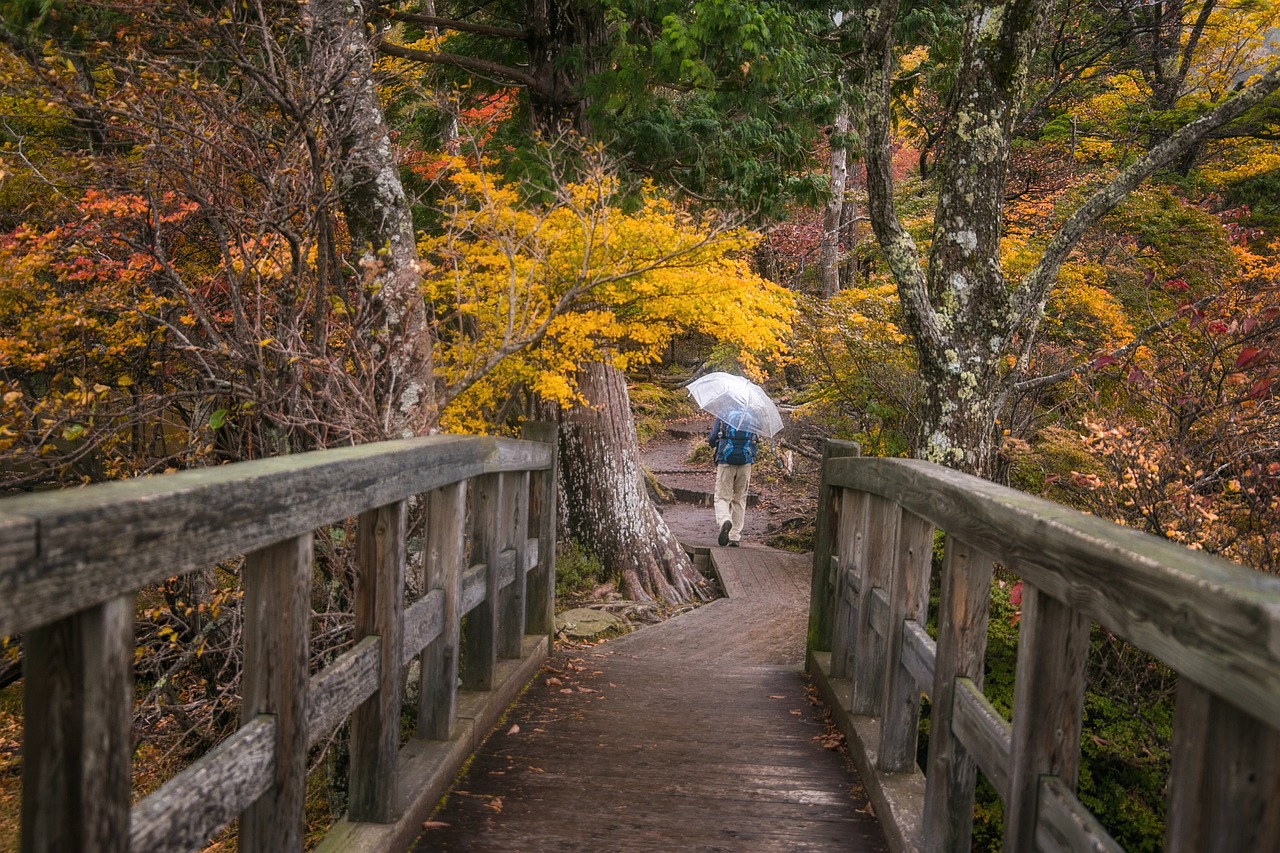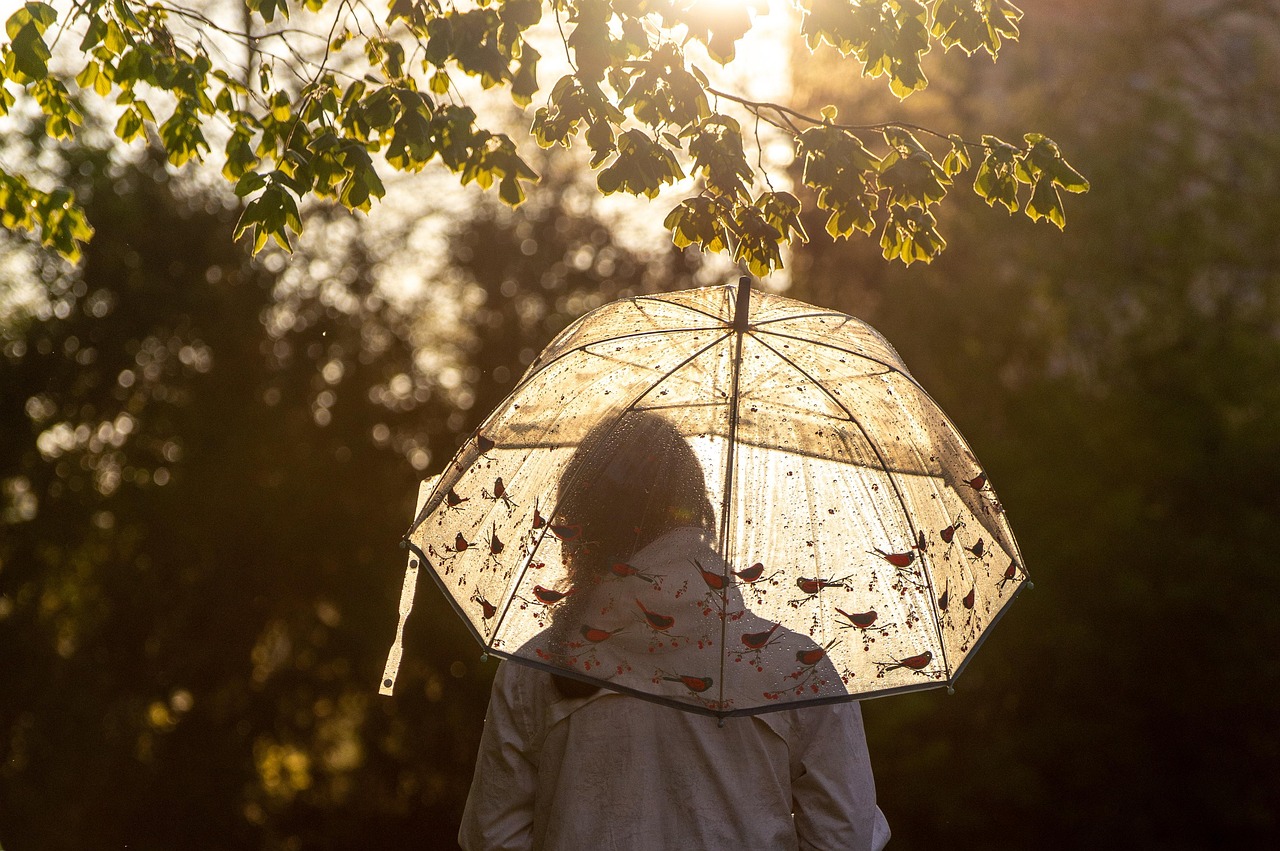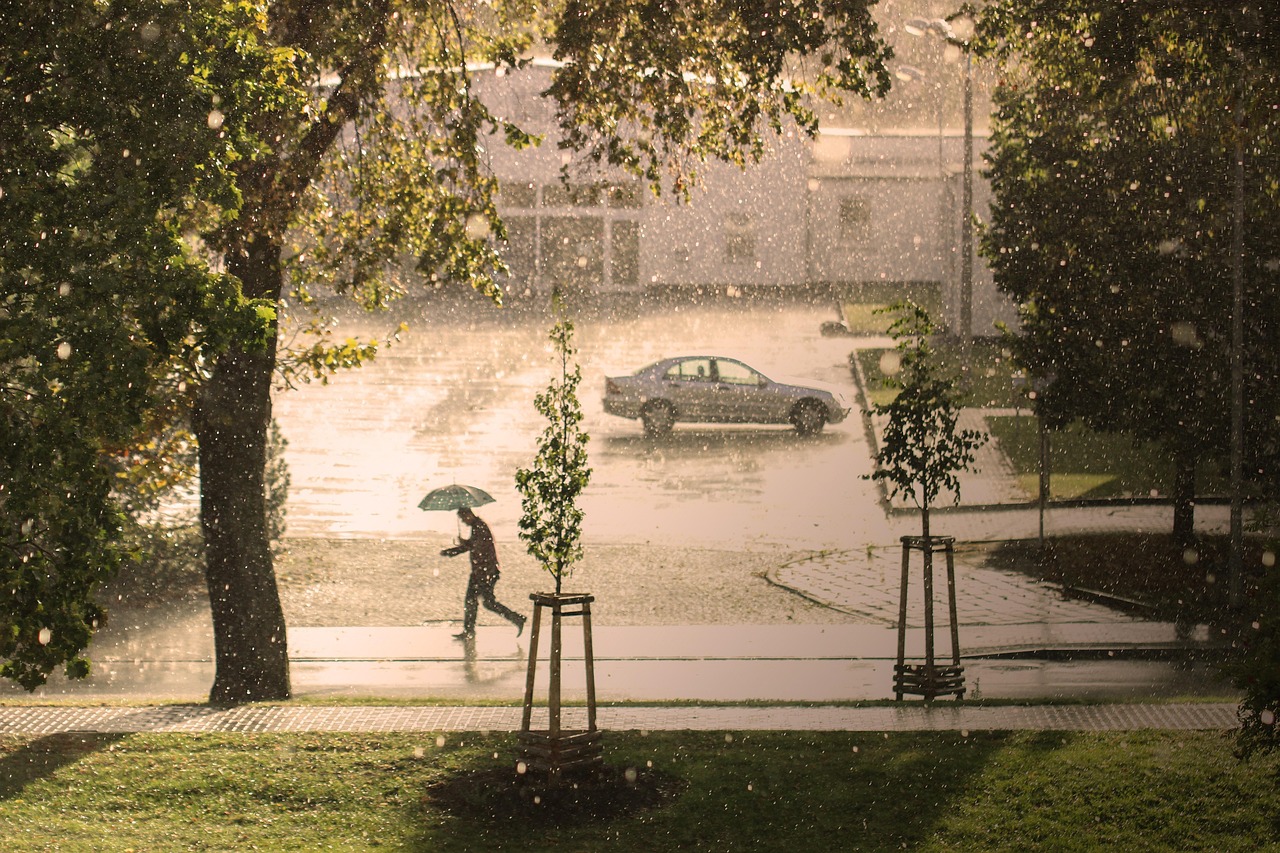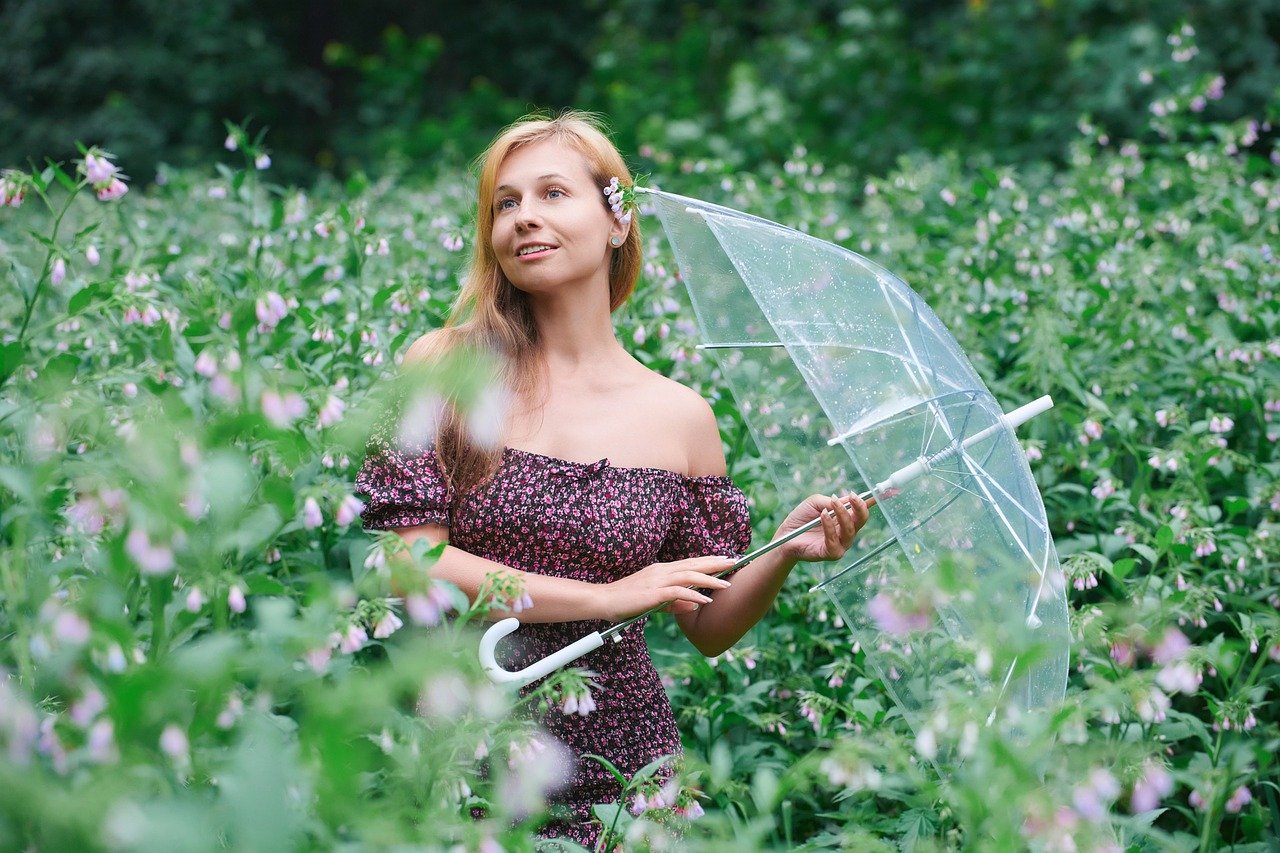The Umbrella Tree, or Schefflera, typically grows at a rate of 12 to 24 inches per year under optimal indoor conditions. With the right care, such as adequate light and moisture, it can achieve fast growth and develop into a beautiful indoor plant.
Understanding the Umbrella Tree
The Umbrella Tree is a popular houseplant known for its distinctive, glossy foliage. Its leaves grow in clusters that resemble an umbrella, which is where it gets its common name. This tropical plant originates from the rainforests of Taiwan and Australia. It thrives in warm, humid environments, making it an ideal choice for indoor growth.

One of the most appealing aspects of the Umbrella Tree is its growth rate. When provided with the right conditions, this plant can grow rapidly, offering quick satisfaction to indoor gardeners. This growth can enhance the aesthetic appeal of your living space significantly.
Factors Influencing Growth Rate
Several factors affect the growth rate of the Umbrella Tree indoors. Understanding these factors can help you create an environment conducive to rapid growth. Here are some key elements to consider:
- Light: Umbrella Trees prefer bright, indirect sunlight. Insufficient light can slow their growth.
- Water: Consistent watering is essential. The soil should remain moist but not soggy.
- Temperature: Ideal temperatures range between 60°F to 75°F (15°C to 24°C). Sudden temperature changes can hinder growth.
- Humidity: High humidity levels promote faster growth. Consider misting the leaves or using a humidifier.
- Soil: A well-draining potting mix is vital to prevent root rot and encourage healthy growth.
Optimal Conditions for Fast Growth
To achieve the fastest growth rate for your Umbrella Tree, focus on creating optimal conditions. Here are some tips to enhance its growth:

- Provide bright, indirect light for at least six hours a day.
- Water thoroughly when the top inch of soil feels dry.
- Maintain a consistent temperature and avoid drafts.
- Increase humidity by placing the pot on a tray filled with pebbles and water.
- Fertilize every four to six weeks during the growing season with a balanced liquid fertilizer.
Common Growth Challenges
<pDespite being a relatively low-maintenance plant, the Umbrella Tree can face several challenges that may slow its growth. Identifying and addressing these issues promptly is crucial for maintaining its health.
Pests and Diseases
The Umbrella Tree can be susceptible to various pests and diseases. Regular inspection of your plant can help you catch problems early. Common pests include spider mites, aphids, and mealybugs. Treat infestations promptly with insecticidal soap or neem oil.
Signs of Stress
It’s essential to recognize signs of stress in your Umbrella Tree. Yellowing leaves may indicate overwatering or nutrient deficiencies. Conversely, brown leaf tips can result from underwatering or low humidity. Adjusting your plant care routine based on these signs can help restore its health and promote faster growth.

Nurturing Your Umbrella Tree
Nurturing your Umbrella Tree involves more than just providing light and water. Proper pruning and repotting also play significant roles in its growth. Pruning helps maintain its shape and encourages bushier growth by removing leggy branches. Repotting every couple of years ensures that your plant has enough space for its roots to expand.
In summary, understanding the Umbrella Tree’s natural habitat can significantly influence how you care for it indoors. The right conditions will encourage rapid growth, transforming your space with lush greenery. By addressing potential challenges and nurturing your plant properly, you can enjoy a thriving Umbrella Tree in your home.
Propagation Methods for Umbrella Trees
Propagation is an exciting way to expand your collection of Umbrella Trees. There are several methods to propagate this plant effectively, allowing you to create new plants from existing ones. The two most common methods are stem cuttings and air layering.
Stem Cuttings
Stem cuttings are one of the easiest and most effective ways to propagate your Umbrella Tree. Here’s how to do it:

- Choose a healthy stem that is at least 4 to 6 inches long.
- Using clean, sharp scissors or pruning shears, cut the stem just below a leaf node.
- Remove the lower leaves to avoid rot when placed in soil.
- Dip the cut end in rooting hormone to encourage root growth.
- Plant the cutting in a small pot filled with a well-draining potting mix.
- Water lightly and cover the pot with a plastic bag or a clear plastic dome to maintain humidity.
- Place the pot in bright, indirect light and wait for roots to develop, which usually takes a few weeks.
Air Layering
Air layering is another effective method that can be particularly useful for larger plants. This technique involves encouraging roots to form while the stem remains attached to the parent plant. Here are the steps:
- Select a healthy branch that is at least 1 inch thick.
- Make a small upward cut about one-third of the way through the branch, just below a leaf node.
- Wrap moist sphagnum moss around the cut area and cover it with plastic wrap to retain moisture.
- Secure both ends of the plastic wrap with twist ties or string.
- After several weeks, roots will begin to form within the moss.
- Once sufficient roots have developed, cut below the rooting area and pot the new plant in a suitable potting mix.
Watering Techniques for Optimal Growth
Watering is crucial for the health and growth rate of your Umbrella Tree. Proper watering techniques can prevent issues such as root rot or dehydration. Here are some tips to help you water your plant effectively:
- Check Soil Moisture: Always check the top inch of soil before watering. If it feels dry, it’s time to water.
- Water Thoroughly: When watering, ensure that water reaches the root zone. Allow excess water to drain out of the bottom of the pot.
- Avoid Overwatering: Overwatering can lead to root rot. Make sure your pot has drainage holes and never let your plant sit in standing water.
- Seasonal Adjustments: During the growing season (spring and summer), your Umbrella Tree may require more frequent watering compared to fall and winter.
Fertilizing Your Umbrella Tree
Fertilizing is essential for promoting healthy growth and vibrant foliage. A balanced fertilizer can provide the necessary nutrients that your Umbrella Tree needs. Here’s how to fertilize effectively:
Choosing the Right Fertilizer
Select a balanced liquid fertilizer with equal parts nitrogen, phosphorus, and potassium, such as a 20-20-20 formula. This ensures that your plant receives adequate macronutrients. Alternatively, you can use a slow-release granular fertilizer for long-lasting nutrition.
Application Schedule
Fertilize your Umbrella Tree during its active growing season. Here’s a simple schedule to follow:
- Frequency: Apply fertilizer every 4 to 6 weeks from early spring until late summer.
- Dilution: Always dilute liquid fertilizers according to package instructions to avoid nutrient burn.
- Watering Before Fertilizing: Water your plant before applying fertilizer to prevent root damage.
Pest Control Strategies
Pests can hinder the growth of your Umbrella Tree if not managed properly. Regular monitoring and appropriate treatments are essential for keeping these pests at bay. Here are some effective strategies:
- Regular Inspection: Check your plant weekly for signs of pests such as webbing, sticky residue, or visible insects.
- Natural Remedies: Use insecticidal soap or neem oil as natural pest control methods that are safe for indoor plants.
- Cultural Controls: Maintain proper care practices like adequate watering and humidity levels to make your plant less susceptible to pests.
By implementing these propagation methods, watering techniques, fertilization schedules, and pest control strategies, you can ensure that your Umbrella Tree thrives indoors and continues to grow at an impressive rate.
Common Umbrella Tree Varieties
Understanding the different varieties of Umbrella Trees can help you choose the best one for your indoor space. Each variety has unique characteristics that may influence its growth rate and care requirements. Below are some popular varieties of Umbrella Trees:
Schefflera Arboricola (Dwarf Umbrella Tree)
The Dwarf Umbrella Tree is smaller than its counterpart and typically grows to a height of 2 to 4 feet. Its compact size makes it ideal for indoor settings where space is limited. This variety has glossy, dark green leaves and a bushy appearance, making it an attractive choice for homes and offices.
Schefflera Actinophylla (Big Umbrella Tree)
The Big Umbrella Tree can reach heights of up to 10 feet when grown indoors. It features larger leaves and a more dramatic appearance, making it a striking focal point in any room. This variety prefers bright light and consistently moist soil for optimal growth.
Schefflera Luseane (Gold Capella)
The Gold Capella variety stands out due to its variegated leaves with golden-yellow edges. This unique coloration can brighten up any indoor space. Like other varieties, it thrives in indirect sunlight and requires regular watering.
Indoor Care Tips for Different Varieties
Caring for different varieties of Umbrella Trees involves specific considerations to ensure healthy growth. Here are some tips tailored to each variety:
Dwarf Umbrella Tree Care
- Light: Prefers moderate to bright indirect light but can tolerate lower light conditions.
- Water: Water when the top inch of soil dries out; avoid waterlogging.
- Humidity: Enjoys higher humidity levels, so consider misting or using a pebble tray.
Big Umbrella Tree Care
- Light: Requires bright, indirect sunlight to maintain its vibrant foliage.
- Water: Keep the soil consistently moist, especially during the growing season.
- Temperature: Thrives in warm temperatures; avoid cold drafts and sudden temperature changes.
Gold Capella Care
- Light: Prefers bright, indirect light to enhance its variegation; direct sunlight can scorch the leaves.
- Water: Water regularly to keep the soil evenly moist; allow the topsoil to dry slightly between waterings.
- Nutrients: Fertilize every 4 to 6 weeks during the growing season for vibrant growth.
Repotting Your Umbrella Tree
Repotting is an essential part of Umbrella Tree care, especially as the plant grows. Knowing when and how to repot can significantly impact your tree’s health and growth rate. Here are key points to consider:
When to Repot
- Root Bound: If roots are growing out of the drainage holes or circling around the pot, it’s time to repot.
- Soil Degradation: If the soil appears compacted or shows signs of nutrient depletion, repotting can refresh the plant’s environment.
- Growth Stagnation: If your Umbrella Tree has stopped growing despite optimal care, it may need more space.
How to Repot
Follow these steps for successful repotting:
- Choose a pot that is 1-2 inches larger in diameter than the current one.
- Prepare fresh potting mix that drains well, ideally a mix designed for tropical plants.
- Gently remove the plant from its current pot, taking care not to damage the roots.
- Loosen any circling roots and prune any dead or damaged roots if necessary.
- Place the plant in the new pot and fill with fresh soil, leaving a gap at the top for watering.
- Water lightly after repotting to help settle the soil around the roots.
Seasonal Care Considerations
Caring for your Umbrella Tree also means adapting your care routine based on the seasons. Each season brings different challenges and opportunities for growth. Here are some seasonal care tips:
Spring and Summer
- Light Requirements: Increase exposure to bright, indirect light as days grow longer.
- Watering Needs: Water more frequently as temperatures rise; monitor soil moisture closely.
- Fertilization: Begin fertilizing every 4-6 weeks to support active growth.
Fall and Winter
- Light Reduction: As daylight decreases, adjust lighting conditions accordingly; avoid placing near cold windows.
- Watering Adjustment: Reduce watering frequency as growth slows; ensure soil dries out more between waterings.
- No Fertilization: Cease fertilization during this period as the plant enters dormancy.
By understanding the different varieties of Umbrella Trees, their specific care needs, and how to adapt your care practices across seasons, you can foster a thriving indoor environment for your plants. This knowledge not only helps promote rapid growth but also enhances the overall beauty of your indoor space.
Additional Considerations for Umbrella Tree Care
In addition to the specific care practices discussed, there are several other considerations that can enhance the growth and overall health of your Umbrella Tree. Understanding these factors will help you create an optimal environment for your plant.
Choosing the Right Pot
The pot you select for your Umbrella Tree can significantly impact its growth. Here are some factors to consider when choosing a pot:
- Size: Choose a pot that allows for growth but is not excessively large. A pot that is too big can lead to overwatering issues.
- Material: Terracotta pots are porous, allowing moisture to evaporate, while plastic pots retain moisture. Consider your watering habits when selecting a material.
- Drainage: Ensure that the pot has adequate drainage holes to prevent water from accumulating at the bottom, which can lead to root rot.
Seasonal Pruning
Pruning is essential for maintaining the shape and health of your Umbrella Tree. Seasonal pruning helps encourage bushier growth and removes any dead or damaged branches. Here are some tips:
- Prune in early spring before the growing season begins to promote new growth.
- Remove any yellow or brown leaves, as well as any branches that are crossing or overcrowded.
- Aim for a balanced shape by trimming back longer stems and encouraging lateral growth.
Common Mistakes to Avoid
Caring for an Umbrella Tree can be straightforward, but certain common mistakes can hinder its growth. Here are some pitfalls to avoid:
- Overwatering: This is one of the most common mistakes. Always check the soil moisture before watering.
- Low Light Exposure: Insufficient light can lead to leggy growth. Ensure your plant receives adequate indirect sunlight.
- Ignoring Pests: Regularly inspect your plant for pests. Early detection can prevent larger infestations.
Final Thoughts
The Umbrella Tree is an exceptional choice for indoor gardening, providing lush greenery and a touch of nature to your home or office. By understanding its growth rate, varying care needs based on the season, and different propagation methods, you can ensure your plant thrives. Remember, the key to a healthy Umbrella Tree lies in providing optimal light, water, humidity, and nutrients.
As you nurture your Umbrella Tree, take the time to observe its responses to different conditions. Each plant is unique, and adjusting your care practices based on its specific needs will yield the best results. With patience and attention, your Umbrella Tree can grow at an impressive rate, transforming your indoor space into a vibrant oasis of greenery.
In summary, whether you are a seasoned plant enthusiast or a beginner, caring for an Umbrella Tree can be a rewarding experience. With the right knowledge and practices, you can enjoy a healthy, flourishing plant that brings joy and beauty to your environment for years to come.
